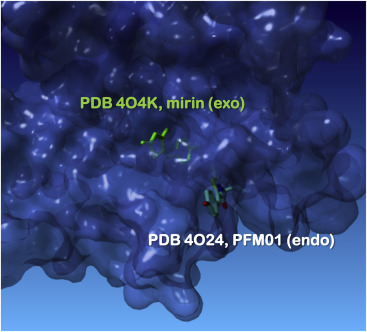当前位置:
X-MOL 学术
›
Cell Chem. Bio.
›
论文详情
Our official English website, www.x-mol.net, welcomes your feedback! (Note: you will need to create a separate account there.)
Small-Molecule Inhibitors Targeting DNA Repair and DNA Repair Deficiency in Research and Cancer Therapy
Cell Chemical Biology ( IF 8.6 ) Pub Date : 2017-09-21 , DOI: 10.1016/j.chembiol.2017.08.027 Sarah R Hengel 1 , M Ashley Spies 2 , Maria Spies 1
Cell Chemical Biology ( IF 8.6 ) Pub Date : 2017-09-21 , DOI: 10.1016/j.chembiol.2017.08.027 Sarah R Hengel 1 , M Ashley Spies 2 , Maria Spies 1
Affiliation

|
To maintain stable genomes and to avoid cancer and aging, cells need to repair a multitude of deleterious DNA lesions, which arise constantly in every cell. Processes that support genome integrity in normal cells, however, allow cancer cells to develop resistance to radiation and DNA-damaging chemotherapeutics. Chemical inhibition of the key DNA repair proteins and pharmacologically induced synthetic lethality have become instrumental in both dissecting the complex DNA repair networks and as promising anticancer agents. The difficulty in capitalizing on synthetically lethal interactions in cancer cells is that many potential targets do not possess well-defined small-molecule binding determinates. In this review, we discuss several successful campaigns to identify and leverage small-molecule inhibitors of the DNA repair proteins, from PARP1, a paradigm case for clinically successful small-molecule inhibitors, to coveted new targets, such as RAD51 recombinase, RAD52 DNA repair protein, MRE11 nuclease, and WRN DNA helicase.
中文翻译:

研究和癌症治疗中针对 DNA 修复和 DNA 修复缺陷的小分子抑制剂
为了维持稳定的基因组并避免癌症和衰老,细胞需要修复大量有害的 DNA 损伤,这些损伤在每个细胞中不断出现。然而,支持正常细胞基因组完整性的过程却使癌细胞能够对辐射和损伤 DNA 的化疗药物产生抵抗力。关键 DNA 修复蛋白的化学抑制和药理学诱导的合成致死作用已成为剖析复杂 DNA 修复网络和作为有前途的抗癌药物的工具。利用癌细胞中的综合致死相互作用的困难在于,许多潜在靶标不具有明确的小分子结合决定因素。在这篇综述中,我们讨论了几项成功的活动,以识别和利用 DNA 修复蛋白的小分子抑制剂,从 PARP1(临床上成功的小分子抑制剂的范例案例)到令人垂涎的新靶点,例如 RAD51 重组酶、RAD52 DNA 修复蛋白质、MRE11 核酸酶和 WRN DNA 解旋酶。
更新日期:2017-09-21
中文翻译:

研究和癌症治疗中针对 DNA 修复和 DNA 修复缺陷的小分子抑制剂
为了维持稳定的基因组并避免癌症和衰老,细胞需要修复大量有害的 DNA 损伤,这些损伤在每个细胞中不断出现。然而,支持正常细胞基因组完整性的过程却使癌细胞能够对辐射和损伤 DNA 的化疗药物产生抵抗力。关键 DNA 修复蛋白的化学抑制和药理学诱导的合成致死作用已成为剖析复杂 DNA 修复网络和作为有前途的抗癌药物的工具。利用癌细胞中的综合致死相互作用的困难在于,许多潜在靶标不具有明确的小分子结合决定因素。在这篇综述中,我们讨论了几项成功的活动,以识别和利用 DNA 修复蛋白的小分子抑制剂,从 PARP1(临床上成功的小分子抑制剂的范例案例)到令人垂涎的新靶点,例如 RAD51 重组酶、RAD52 DNA 修复蛋白质、MRE11 核酸酶和 WRN DNA 解旋酶。



























 京公网安备 11010802027423号
京公网安备 11010802027423号